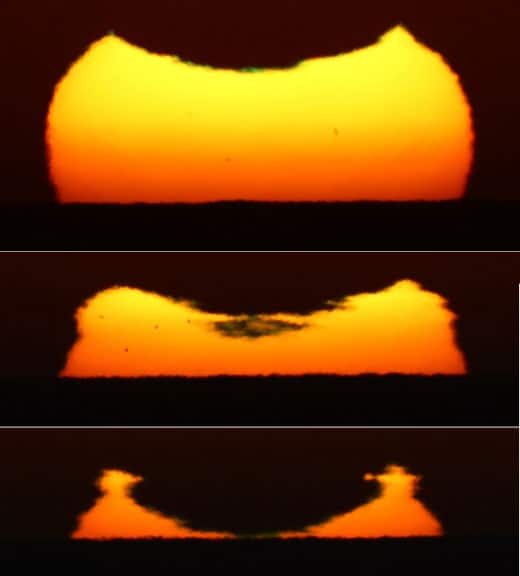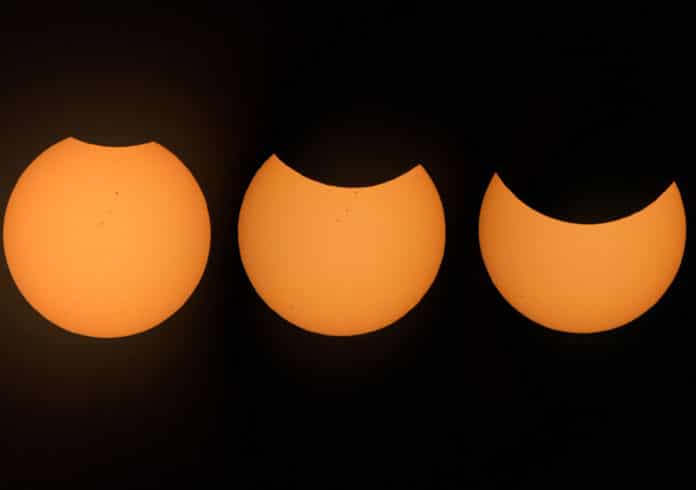The first partial solar eclipse of this year- which took place on Saturday, April 30- was visible across Antarctica, the southern tip of South America, and the Pacific and Atlantic Oceans.
This partial solar eclipse was produced after the new Moon passed in front of the sun. The new Moon blocked as much as 64% of the sun.
The moon and sun are not perfectly aligned during the partial solar eclipse. Hence, the Moon does not cover the sun entirely. This gives the Sun a crescent shape or makes it appear as if a ‘bite’ has been taken out of the Sun.
Joerg Schoppmeyer watched the crescent-shaped sunset into the Pacific Ocean from Vina del Mar, Chile. He told Spaceweather.com that “The shape of the sun was altered not only by the eclipse but also by temperature inversions near the sea surface. This created strange mirages.”

“The eclipsed sunset was incredible!”
The timeanddate.com shares the animation of how the eclipse looked near the maximum point. The curvature of the Moon’s path is due to the Earth’s rotation.
This eclipse was the first of two partial eclipses to occur in 2022. The next will take place on October 25.
